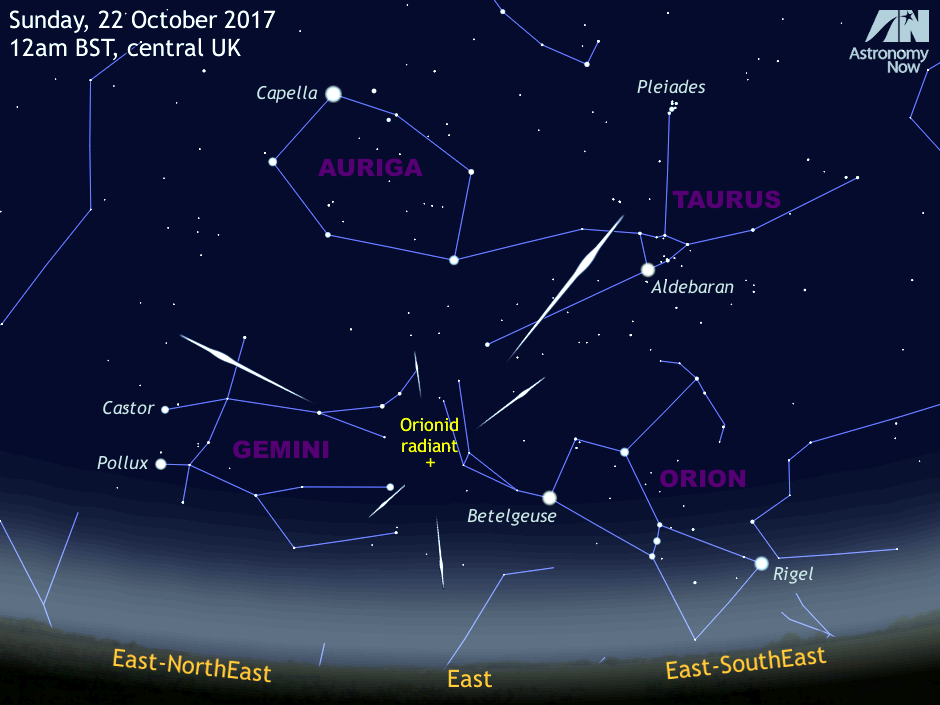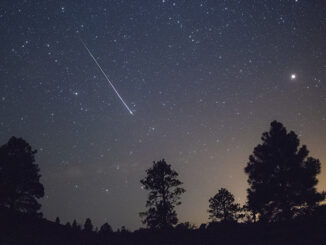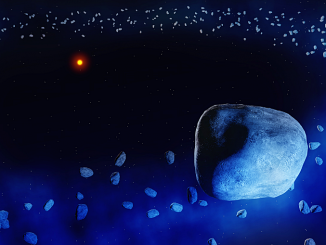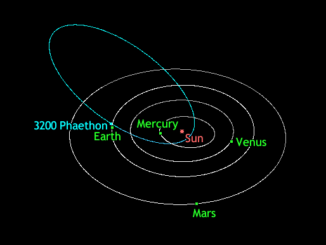
Cometary particles strewn along the orbit of periodic Comet 1P/Halley (aka Comet Halley) are the genesis of the Orionids. Those meteoroids entering the Earth’s atmosphere — particularly just after midnight when we are facing directly into the stream — do so at velocities up to 41 miles (66 kilometres) per second, hence it’s not surprising that the streak of light marking their heated demise can be so impressive.
Active from 2 October to 7 November, the peak of the shower is expected on the night of 21-22 October for observers in Western Europe and the British Isles.
Observers looking in the eastern sky around midnight can expect up to 20 meteors per hour under favourable conditions, especially since this year’s maximum occurs two days after new Moon. (The waxing crescent Moon sets about 45 minutes before darkness falls on Saturday 21 October for the centre of the UK.)
As is typical of most meteor showers, fainter Orionids are the most plentiful, so your chances of observing some with the naked eye are greatly improved if you can find a safe, rural location well away from artificial lights. As for Halley’s Comet, we will have to wait until 2061 before it graces the night sky once again.



